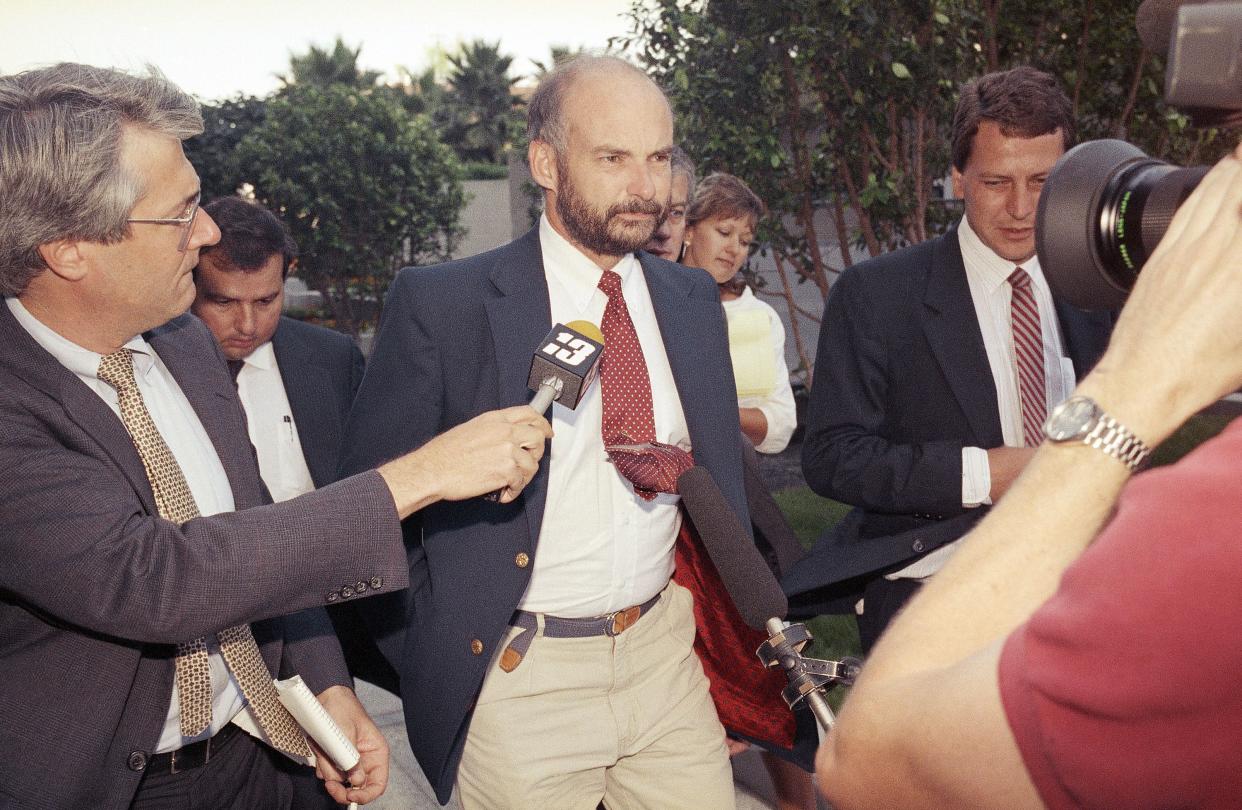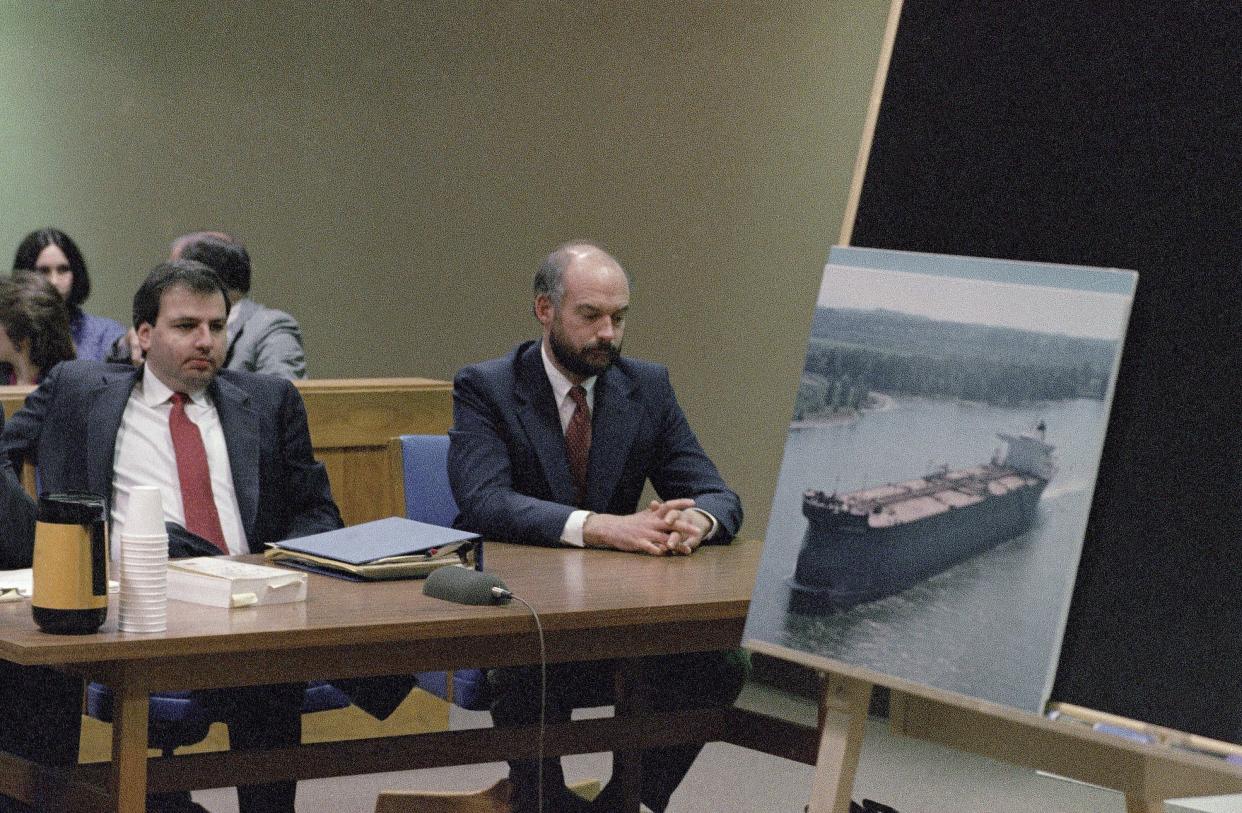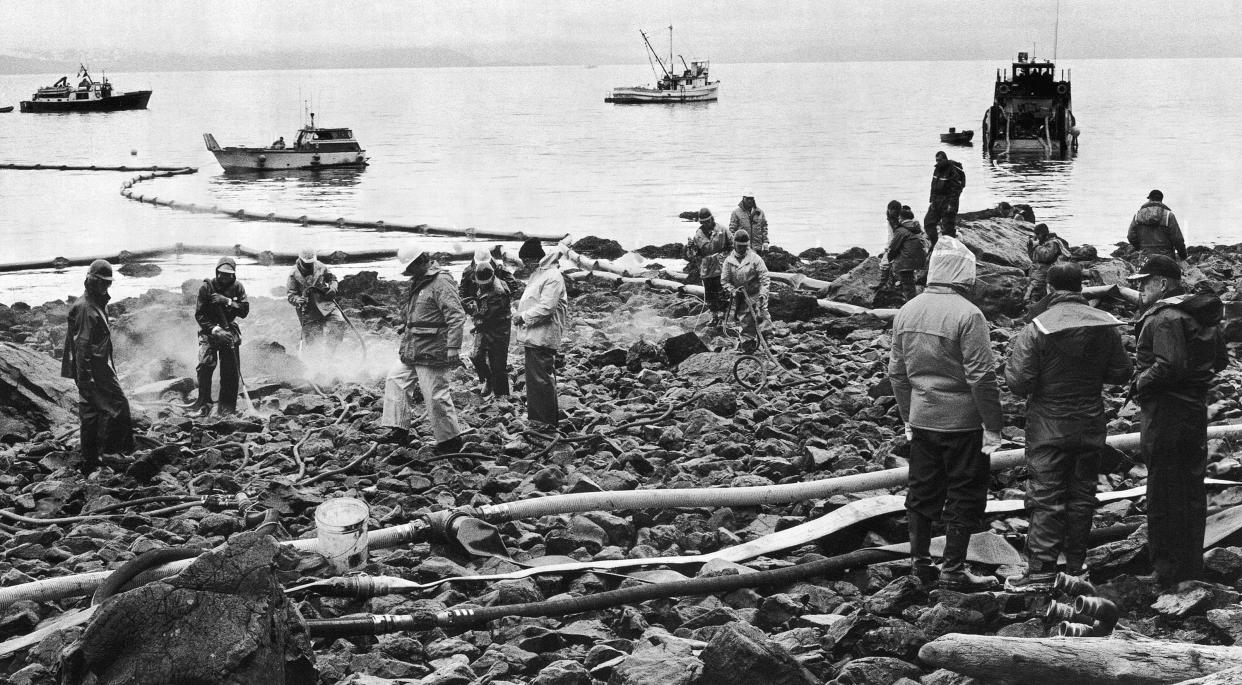Exxon Valdez Capt. Joseph Hazelwood dies at age 75
Joseph Hazelwood, who captained the Exxon Valdez when it ran aground in 1989 and unleashed almost 11 million gallons of oil off of Alaska, has died. He was 75.
Hazelwood died in July of a combination of cancer and COVID-19, his nephew Sam Hazelwood recently told The New York Times.

FILE - Former Exxon Valdez Capt. Joseph Hazelwood is surrounded by reporters as he leaves his re-licensing hearing in Long Beach, Calif., on July 25, 1990. (Alan Greth/)
It was 12:04 a.m. on March 24, 1989 when the tanker hit the Bligh Reef in Alaska and sent almost 11 million gallons of oil into the Prince William Sound’s rich fishing waters and 1,200 miles of coastline.
It was one of the worst oil spills in U.S. history.

FILE - Fired Exxon Valdez skipper Joseph Hazelwood, right, sits with his lawyer Michael Chalos as a photograph of the tanker is displayed on an easel in Anchorage Superior Court, March 20, 1990. (Jack Smith/)
Hazelwood’s family was yet to comment publicly as of Monday night.
Nearly a quarter million seabirds, 2,800 sea otters, 300 harbor seals, 250 bald eagles, up to 22 killer whales and billions of fish eggs were killed, the Exxon Valdez Oil Spill Trustee Council estimated. Fish populations were not replenished for years, and to this day, oil is still visible under some beach surfaces in the sound.
Hazelwood was found guilty of negligent discharge of oil into state waters in a 1990 trial in Anchorage. But he was acquitted of other charges — including operating a vessel while intoxicated.

FILE - Workers test a mild chemical oil dispersant on a beach contaminated by the Exxon spill in Anchorage, Alaska, on May 18, 1989. (Clare Richardson/)
“As master of the vessel, I accept responsibility for the vessel and the actions of my subordinates,” Hazelwood said in 1999. “I’ve never tried to avoid that. I’m not some remorseless oaf.”
The disaster led to passage of the Oil Pollution Act of 1990, which “streamlined and strengthened” the ability of the U.S. Environmental Protection Agency to respond to catastrophic oil spills and set up a trust fund financed by an oil tax.
The legislation required oil storage facilities and vessels to provide a definitive plan for responding to such spills.
The Exxon Valdez disaster was unparalleled until 2010, when the Deepwater Horizon exploded and shot 168 million gallons of crude into the Gulf of Mexico.
With News Wire Services
